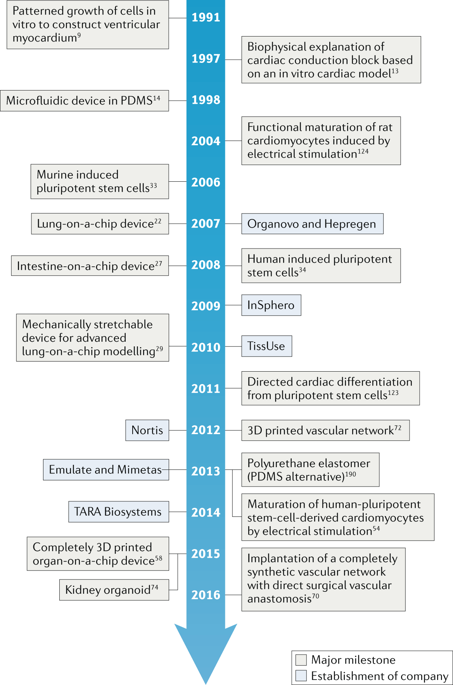Nature Reviews Materials ( IF 79.8 ) Pub Date : 2018-08-01 , DOI: 10.1038/s41578-018-0034-7 Boyang Zhang , Anastasia Korolj , Benjamin Fook Lun Lai , Milica Radisic

|
Predicting the effects of drugs before human clinical trials is at the heart of drug screening and discovery processes. The cost of drug discovery is steadily increasing owing to the limited predictability of 2D cell culture and animal models. The convergence of microfabrication and tissue engineering gave rise to organ-on-a-chip technologies, which offer an alternative to conventional preclinical models for drug screening. Organ-on-a-chip devices can replicate key aspects of human physiology crucial for the understanding of drug effects, improving preclinical safety and efficacy testing. In this Review, we discuss how organ-on-a-chip technologies can recreate functions of organs, focusing on tissue barrier properties, parenchymal tissue function and multi-organ interactions, which are three key aspects of human physiology. Specific organ-on-a-chip systems are examined in terms of cell sources, functional hallmarks and available disease models. Finally, we highlight the challenges that need to be overcome for the clinical translation of organ-on-a-chip devices regarding materials, cellular fidelity, multiplexing, sensing, scalability and validation.
中文翻译:

芯片上器官工程的进展
在人类临床试验之前预测药物的作用是药物筛选和发现过程的核心。由于2D细胞培养和动物模型的可预测性有限,药物发现的成本正在稳步增加。微细加工和组织工程学的融合产生了单片器官技术,这为药物筛选的常规临床前模型提供了替代方法。芯片上的器官设备可以复制人类生理学的关键方面,这对于理解药物作用,改善临床前的安全性和功效测试至关重要。在这篇综述中,我们将讨论片上器官技术如何重现器官的功能,重点是组织屏障特性,实质组织功能和多器官相互作用,这是人类生理学的三个关键方面。根据细胞来源,功能标记和可用的疾病模型检查了特定的单片器官系统。最后,我们重点介绍了在器官,芯片保真度,材料保真度,多路复用,传感,可扩展性和验证等方面对芯片上器官设备进行临床翻译所需要克服的挑战。











































 京公网安备 11010802027423号
京公网安备 11010802027423号